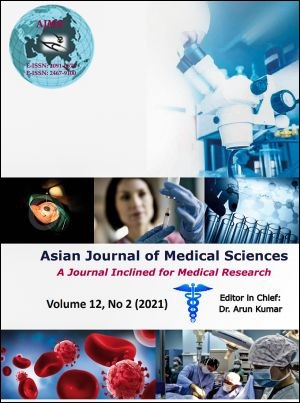Percutaneous management of Stuck Rotational Atherectomy Burr: Experience at a tertiary care centre
Keywords:
Rotational atherectomy, Stuck burr, Entrapment, RotablatorAbstract
Background: The incidence of stuck rotational atherectomy (RA) burr is extremely low, and its description has been sporadic in the literature about the systemic management of this complication.
Aims and Objective: The current study was designed to present the experience of our center and propose an algorithm for the retrieval of stuck RA burr.
Materials and Methods: We retrospectively evaluated cases of RA between August 2018 to August 2020 at our center. An entrapped RA burr was defined as an inability to move the burr backward without any additional maneuvers during or after the rotablation of a coronary lesion. Angiographic and procedural details were reviewed in the identified cases of entrapped rotablator burr, details of maneuvers used to retract the burr was documented. We further analyzed the literature using PubMed search using the keywords “entrapment of rotablator burr”, “stuck rotablator” and “rotablation complications”. All the articles with entrapped rotablation burr were identified and scrutinized for the techniques used for percutaneous retrieval.
Results: Out of the total 5780 Percutaneous coronary intervention (PCI) procedures, RA was performed in 75 patients and RA burr entrapment was confirmed in two cases. Both the cases were seen in patients with angulated and heavily calcified lesions. The cases were managed percutaneously by endovascular maneuvers. A total of 8 techniques were identified by analysis of available literature for burr retrieval with surgery being the favored one. Using the experience of our center and available literature we propose a simplified working algorithm towards systematic management of this complication.
Conclusion: RA burr entrapment is rare, but a life-threatening complication, and the operator should be prepared with strategies for successful retrieval of stuck burr. Percutaneous retraction maneuvers should be used as the first-line management for retrieval of stuck burr followed by surgical referral. Using the proposed algorithm this rare complication can be managed systematically and effectively.
Downloads
Downloads
Published
How to Cite
Issue
Section
License
Authors who publish with this journal agree to the following terms:
- The journal holds copyright and publishes the work under a Creative Commons CC-BY-NC license that permits use, distribution and reprduction in any medium, provided the original work is properly cited and is not used for commercial purposes. The journal should be recognised as the original publisher of this work.
- Authors are able to enter into separate, additional contractual arrangements for the non-exclusive distribution of the journal's published version of the work (e.g., post it to an institutional repository or publish it in a book), with an acknowledgement of its initial publication in this journal.
- Authors are permitted and encouraged to post their work online (e.g., in institutional repositories or on their website) prior to and during the submission process, as it can lead to productive exchanges, as well as earlier and greater citation of published work (See The Effect of Open Access).




